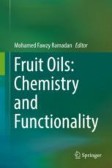Search
Search Results
-
Thermal behaviour of the different parts of almond shells as waste biomass
The main aim of this study is to investigate the thermal behaviour of the different parts of almond shells produced in an almond industry as a waste...

-
From unavoidable food waste to advanced biomaterials: microfibrilated lignocellulose production by microwave-assisted hydrothermal treatment of cassava peel and almond hull
Lignocellulose based nanomaterials are emerging green biosolids commonly obtained from wood pulp. Alternative feedstocks, such as as unavoidable food...

-
Almond (Prunus dulcis)—Morphology, Taxonomy, Composition and Health Benefits
Almonds, one of the earliest domesticated trees, although a nut is botanically categorized as drupes of the Rosaceae family and sub-genus amygdalus....
-
Pressurized Water Extraction as a Tool for Rapid and Efficient Isolation of Proteins from Almonds
Pressurized water extraction (PWE) is a technique suitable for efficient extraction of almond proteins, some of which are known as potent allergens....

-
Almond (Prunus dulcis) oil
The almond tree, Prunus dulcis, is a species that belongs to the Amygdalus subgenus inside the Prunus genus, the Rosaceae family and the order...
-
Application of chemometric tools for the comparison of volatile profile from raw and roasted regional and foreign almond cultivars (Prunus dulcis)
In almonds, volatile compounds are major contributors to flavour, being scarce the current knowledge about their volatile profile. Hence, this work...

-
Fruits, Vegetables, Nuts, and Fungi
Food fraudulent activities are creating more concern in the society. The increased interest of consumers in the nutritional, sensorial, and visual...
-
Morphological, mechanical and antioxidant properties of Portuguese almond cultivars
The aim of this study was to evaluate morphological (of fruit and kernel), mechanical (namely shell rupture force) and antioxidant properties...

-
Effect of Roasting on Physicochemical Properties of Wild Almonds (Amygdalus scoparia)
Roasting enhances sensory quality of wild almonds ( Amygdalus scoparia ). The aim of the study was to evaluate the use of microwaves (480 W for 3 or...

-
Nanopaper from almond (Prunus dulcis) shell
Five pul** methods using different reagents were used for the delignification of almond shells: sodium hydroxide 7.5 % v/v for 24 h at 60 °C,...

-
Characterization of Almond Cultivars by the Use of Thermal Analysis Techniques. Application to Cultivar Authenticity
Almonds are subjected to thermal processes in the production of processed food and this can affect their thermal stability and lead to oxidation...

-
Classification of Almond Cultivars Using Oil Volatile Compound Determination by HS-SPME–GC–MS
Protected designations of origin “Alicante” and “Jijona” nougats are manufactured products produced using raw materials from Eastern Spain. In order...

-
Sugars Profiles of Different Chestnut (Castanea sativa Mill.) and Almond (Prunus dulcis) Cultivars by HPLC-RI
Sugar profiles of different almond and chestnut cultivars were obtained by high-performance liquid chromatography (HPLC), by means of a refractive...

-
Classification of Four Almond Cultivars Using Oil Degradation Parameters Based on FTIR and GC Data
Four almond cultivars (Marcona, Guara, Garrigues and Butte) have been classified using attenuated total reflectance Fourier transform infrared...

-
Investigation of aromatic compounds in Alicante and Jijona turrón
Alicante and Jijona turrón are honey- and almond-based confectionery products very famous in Spanish countries, especially during Christmas. In this...

-
Investigation of aromatic compounds in toasted almonds used for the manufacture of turrón
Turrón is being elaborated in a traditional way using raw materials from Eastern Spain; however, the production of honey and especially almond does...

-
Mathematical quantification of almond content in Jijona turrón
Alicante and Jijona turrones are typical Spanish confectionery products made from toasted almonds, honey and sugar. Turrón is commercially classified...

-
A possible way to predict the genetic relatedness of selected almond cultivars
Some multivariate statistical techniques were applied to the fatty acid composition of almond seed for a set of 107 samples of cultivars grown in...
-
A chemometric study of genotypic variation in triacylglycerol composition among selected almond cultivars
Triacylglycerol composition of 10 almond cultivars grown in seven different environments was determined by high-performance liquid chromatography,...
-
Nuts used in confectionery
Tree nuts are the edible kernels of seeds of trees, and have been an important source of food for man since prehistoric times. Through the centuries...
